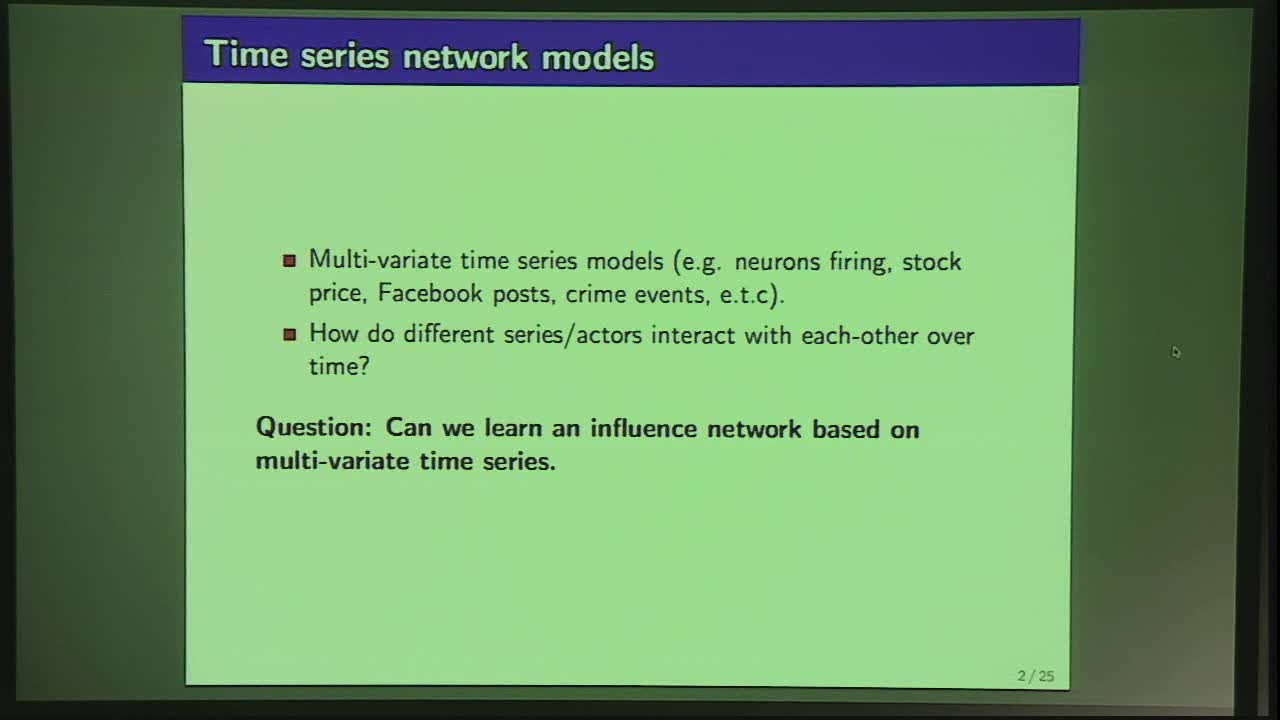Non-parametric Sparse Additive Auto-regressive Network Models
Presenter
April 26, 2018
Keywords:
- High-dimensional, time series, SpAM, RKHS
Abstract
Consider a multi-variate time series, which may correspond to spike train responses for multiple neurons in a brain, crime event data across multiple regions, and many others. An important challenge associated with these time series models is to estimate an influence network between the d variables, especially when the number of variables d is large meaning we are in the high-dimensional setting. Prior work has focused on parametric vector auto-regressive models. However, parametric approaches are somewhat restrictive in practice. In this paper, we use the non-parametric sparse additive model (SpAM) framework to address this challenge. Using a combination of beta and phi-mixing properties of Markov chains and empirical process techniques for reproducing kernel Hilbert spaces (RKHSs), we provide upper bounds on mean-squared error in terms of the sparsity s, logarithm of the dimension logd, number of time points T, and the smoothness of the RKHSs. Our rates are sharp up to logarithm factors in many cases. We also provide numerical experiments that support our theoretical results and display potential advantages of using our non-parametric SpAM framework for a Chicago crime dataset.
